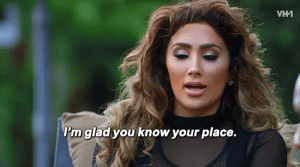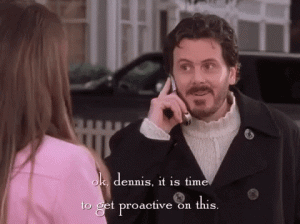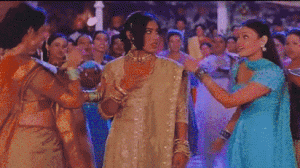When was the last time you had a conflict? Was it a minor argument over which colour suits better for your bedroom furniture or was it a serious clash between stakeholders of your company? The simple truth is that conflicts are inevitable in any group. In this post, we want to help you understand conflicts better and manage them in a productive way.
In their book “Organizational Behaviour”, Stephen Robbins and Timothy Judge argue that groups without any conflicts are more likely to become static and unable to change or to demonstrate sufficient levels of innovation. At the same time, when properly channelled and directed, conflicts can help groups stay viable, innovative, self-critical and creative. Sound good in theory, right? But before we jump into practice, let’s set the common ground with the term for conflict, its types and common causes.
Conflict is a process that begins when one party perceives that another party has negatively affected, or is about to negatively affect, something that the first party cares about.
Conflict can be based on the roles we play. We all constantly adapt our behaviour and manage the impressions we make on others, based on what we feel is required, appropriate and necessary for our position and status. Some tension can come from playing a role which isn’t asked for or for which we don’t have a mandate. Typical examples are solving problems when we are implicitly asked to be listeners, not problem-solvers (I am looking at you gentlemen, your wives and girlfriends would probably agree with me), or playing devil’s advocate when critical thinking isn’t lacking and therefore creating a sense of frustration in the group. We will elaborate more on the roles we play in conflict situations and how to manage them in our next posts.

Numerous conflicts stem from issues of hierarchy and responsibility: “this isn’t my job” or “you don’t have a right to demand this”. This is reinforced when the work processes aren’t clear and can be overcome with formalised work processes. The key is finding the balance between structure and flexibility or order and chaos. Too much structure and things feel slow and complicated, too little and efforts aren’t coordinated which leads to a waste of time, energy and money.

Sometimes agreement becomes the main objective in a group. It can happen when the group is in its early stages of formation or because of a concentration of too many conflict-avoidant people or even because of organisational culture. Such conditions are optimal for groupthink to occur. In “Social Psychology” study, Groupthink is defined as “a kind of thinking in which maintaining group cohesiveness and solidarity are more important than considering the facts in a realistic manner”. It is a real risk in conflict avoidant cultures and it should be tackled with a properly managed functional conflict.
Risk factors for groupthink: watch out for these!
- Highly cohesive group: the group is valued and attractive membership is attractive;
- Group is isolated, sheltered from alternative viewpoints;
- Its leader is directive and controls the discussions;
- Stress levels are high and perceived threats to the group are omnipresent;
- The group has poor decision-making procedures and no standard approach to finding alternative viewpoints.

Symptoms of groupthink:
- Illusions of invulnerability;
- Belief in moral correctness of the group “God is on our side” kind of attitude;
- Stereotyped views of out-groups;
- Self-censorship;
- Direct pressure on dissidents to conform;
- The illusion of unanimity;
- Mind guards: group members protect the leader from opposing arguments. and viewpoints.
If you detect any of those symptoms in your group, it might need a functional conflict. Innovation can be a positive outcome of a functional conflict, finding new and better ways to do something, establishing a new strategy. This requires, however, having a working framework to channel conflicts, managing their dynamic and crystallising their outcomes. The study of teams with productive conflicts shows that teams which had good fights tended to:
- Work with more information on the issue rather than less;
- Looked for as many alternatives as possible, to enrich debates;
- Established common goals, co-created;
- Used humour in the decision process;
- Had a balanced power structure;
- Never forced consensus for the sake of it.
How can we make use of conflicts?
Act early
Use processes for your daily tasks. Make use of framings and check-ins to avoid misalignment and misunderstandings around why we are here, what we aim to do and how. This can root out potential dysfunctional conflicts early on in the process.

Differentiate and diagnose conflicts.
They are signals that things need to change, hopefully for the better. The next step is making sense of them: why are we experiencing tensions? Where do these tensions come from and what needs do they highlight? They can help to bring the conversation to the appropriate level, from the very abstract to the very concrete. Do you need to think in terms of strategy or implementation? Is it a question of why, how or what needs to be done?

De-escalate dysfunctional conflicts.
If things go into the “you always/never do (…)” “you are such a (…)” and get personal, if the emotional temperature becomes counter-productive, try applying some of these tips proposed by psychologists:
- Respect personal space;
- Don’t be provocative;
- Establish verbal contact;
- Be concise;
- Identify wants and feelings;
- Listen closely to what people are saying and what they mean;
- Agree to disagree if needed, listening doesn’t mean agreeing;
- Set clear boundaries for what is acceptable or not;
- Offer choices and hope for positive outcomes;
- Debrief conflicts with colleagues.

Observe instead of judging.
We can’t help ourselves, we are programmed to judge. It takes a conscious effort to observe instead of giving a positive or negative value to what we notice. A good way to distinguish the two concepts is to stick to senses: what is the stimulus you are seeing, hearing, feeling? Separating interpretation from observation is a useful skill to develop in many different settings.
Have hosts and stewards for your processes.
Having someone who is responsible for the process is essential. The person hosting can act as a mediator for the group and give each member the time to take a step back and think instead of getting caught up in the action. This helps to keep things moving in the desired direction and can greatly improve the atmosphere and efficiency of teams.

We hope you found this information useful. If you want to learn more or if you feel like conflicts are disrupting your team — let us know. Not only can Green Elephant help you and your company deescalate and resolve the existing conflict, but also we can train your team to become conscious communicators and direct conflicts and stressful situations into productive tracks. Contact our head coach Anu to learn more, we will be happy to help you!



